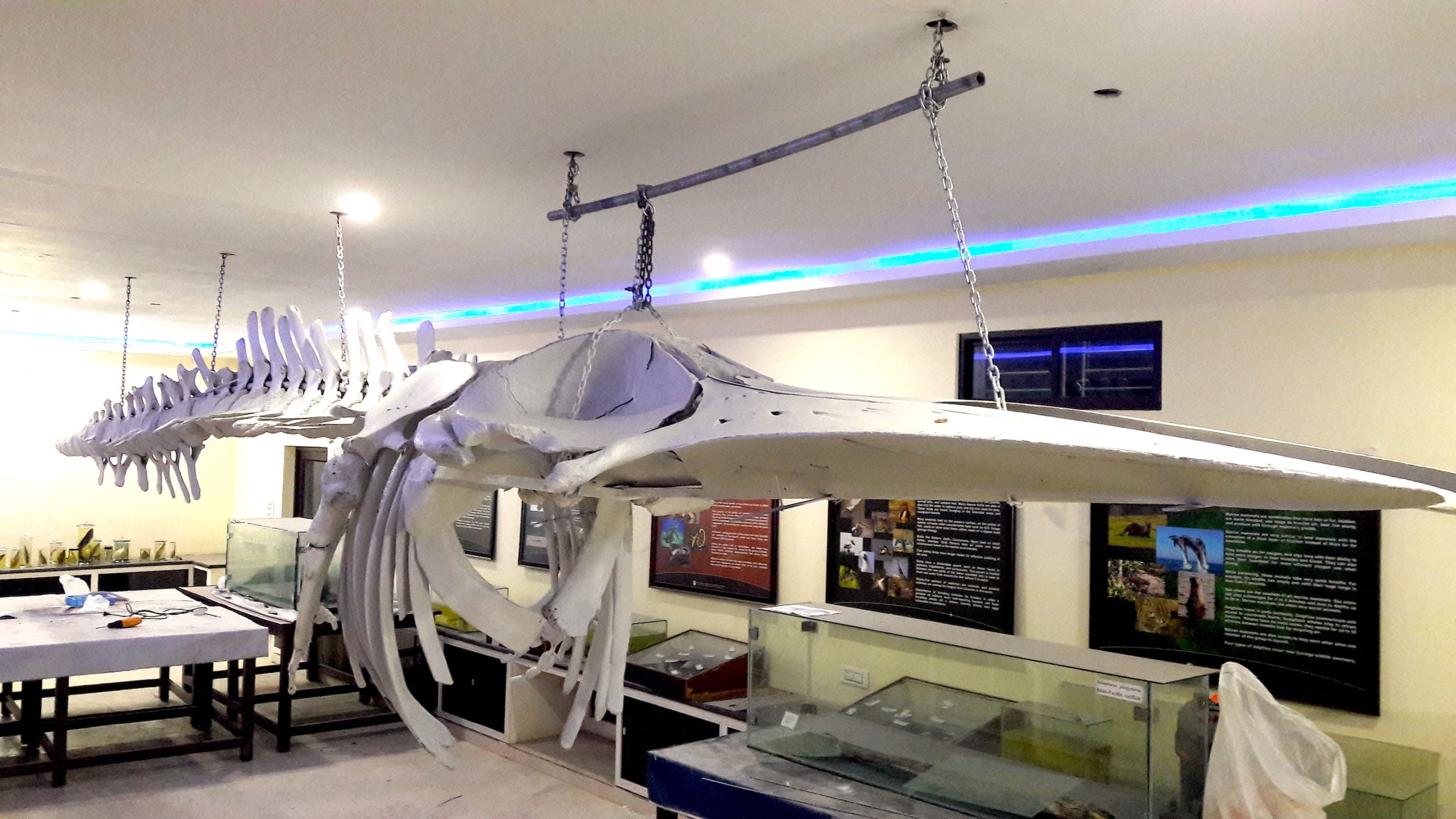 Listen to this article
•
15:34 min
Listen to this article
•
15:34 min
In March 2017, Balaji Kumpatla, 34, received an unusual request from his seniors at the forest department — to assemble the skeletal remains of several blue whales that were stranded along the Andhra Pradesh coast, into one complete structure.
The department intended to install the complete skeleton at the Coringa Marine Museum, located at the Coringa Wildlife Sanctuary, Andhra Pradesh, to help create awareness around the marine species. Primary surveys, however, revealed that the department didn’t have requisite funds for the task. After much deliberation, the then chief conservator of forests and divisional forest officer dared Kumpatla to take up the project on a limited budget.
Kumpatla had joined the forest department’s biodiversity lab in Lalacheruvu, Rajahmundry,as a project scientist in 2012, just two years after he had finished his Masters’ in Zoology from Andhra University.

Cover: A 32-feet long blue whale skeletal structure is on display at the Coringa Marine Museum, Andhra Pradesh. Cover photo: Balaji Kumpatla
“I was terrified in the beginning, but I quickly received help. The Zoology Department at the Andhra University has a display of two such whale skeletons, and being a student of Zoology, I had studied them well,” Kumpatla said. He looked up blue whale anatomy and structure on the internet and sought help from experts. “What would have probably been a 15-day task took me two months. I was working after office hours, and also learning on the job,” he said. The bony remains were chemically treated and then stitched together with stainless steel plates. “Where bones were missing, we used Plaster of Paris to recreate sections,” he said.
But was he certain that these were all blue whale remains? Kumpatla had no iota of doubt. “The constitution of a blue whale is evident from the structure of its head and jaws,” he explains. Scientifically named Balaenoptera musculus, blue whales can measure up to 100 feet long (almost as long as a basketball court) and weigh over 200 tons. They have broad bodies and a U-shaped head with a very small (approx 33 cm) dorsal fin. A ridge runs from the blowholes, a blue whale’s twin nostrils, to the tip of the snout.
Blue whales can be identified by their small, slim flippers, about one-seventh of the length of the body, bluish grey skin with mottled spots of grey or yellow, and a towering throw of water up to 30-feet high, when they come up to the surface to exhale. They are the largest baleen whales, which derive their names from the comb-like keratin structure that line their upper jaw, also called ‘baleen’. In India, these giants are protected under the Schedule I of the Wildlife (Protection) Act, 1972. The International Union for Conservation of Nature (IUCN) Red List marks them as Endangered but also notes that its population is increasing, thanks to conservation initiatives worldwide.

What do we know about stranding?
“The event ‘stranding’ means when alive or dead marine mammal swims or floats onto shore and becomes ‘beached’ or incapable of returning to sea,” define scientists from CMFRI in a study published in October 2018. “If more than two animals of the same species extend the stranding for one or more days and over miles of shoreline, it is termed as mass stranding. Mass stranding of dolphins, whales, and other marine mammals has been reported from Aristotle’s time about 2300 years ago.”
Around India, blue whales live in the Indian Ocean. However, researchers cannot yet explain why they swim up to the Bay of Bengal or wash into India’s coasts. Most die when they are stranded, some are rehabilitated. The Central Marine Fisheries Research Institute (CMFRI)-Kochi mapped the stranding data last year and identified three sites off the Andhra Pradesh coast where blue whales frequently get stranded.
The earliest blue whale strandings in India can be dated as early as 1830, informs Kumaran Sathasivam, co-founder of the Marine Mammal portal and author of Marine Mammals of India. He finds three mentions of blue whales in the ‘Catalogue of the Mammalia in the Museum Asiatic Society’ published in 1863 by Edward Blyth, the Curator of the museum. “The first of the Asiatic Society blue whales was from the Bay of Bengal. Blyth mentions the ear bones of a third individual, which was probably obtained the earliest, perhaps in the early 19th century or even late 18th century,” Sathasivam writes over email. His portal lists 38 incidents of blue whale stranding in Indian shores since 1939.

What leads to stranding?
Scientists have developed several hypotheses around the reasons for ‘stranding’ but none are scientifically validated. One of the hypotheses says that smaller whales that live together in pods tend to follow a leader and simply choose to die or “commit suicide” if the leader dies. The CMFRI documents that, “a whole group of cetaceans (whales and dolphins) could strand around a sick companion refusing to leave it until it dies due to strong cohesive bonds.” Professor DE Babu from the Zoology Department of Andhra University suggests that stranding could also be the result of movement of fishing trawlers and giant ships. “Whales and sharks may get too near the coast in search of food during high tides and are not able to get back to deeper waters when the tide recedes. This often happens with large whales during full moon and no moon times. They often get trapped by nets and water currents formed due to movement of trawlers and giant water vehicles or from sonar sounds emitted by shipping vehicles,” he explained.
Seismic surveys to identify the presence of oil and gas deposits involve increased background noise. This can cause hearing impairments in cetaceans, which often lead to altered surface behaviour and reduced efficiency in foraging for food, resulting in stranding, say CMFRI-researchers.

These giants also give back to their habitat. They survive on tiny crustaceans called krill and the teeniest of shrimps, and produce neon-coloured poop that is rich in iron and feeds microscopic marine algae called phytoplankton. These marine algae in turn help in carbon absorption and produce a large share of the oxygen, just like trees.
Kumpatla’s 32-feet long blue whale skeletal structure replicates the natural anatomy of the species, and is on display at the Coringa Marine Museum. He hopes his work will encourage people to learn and protect whales, especially these regal blue ones.





